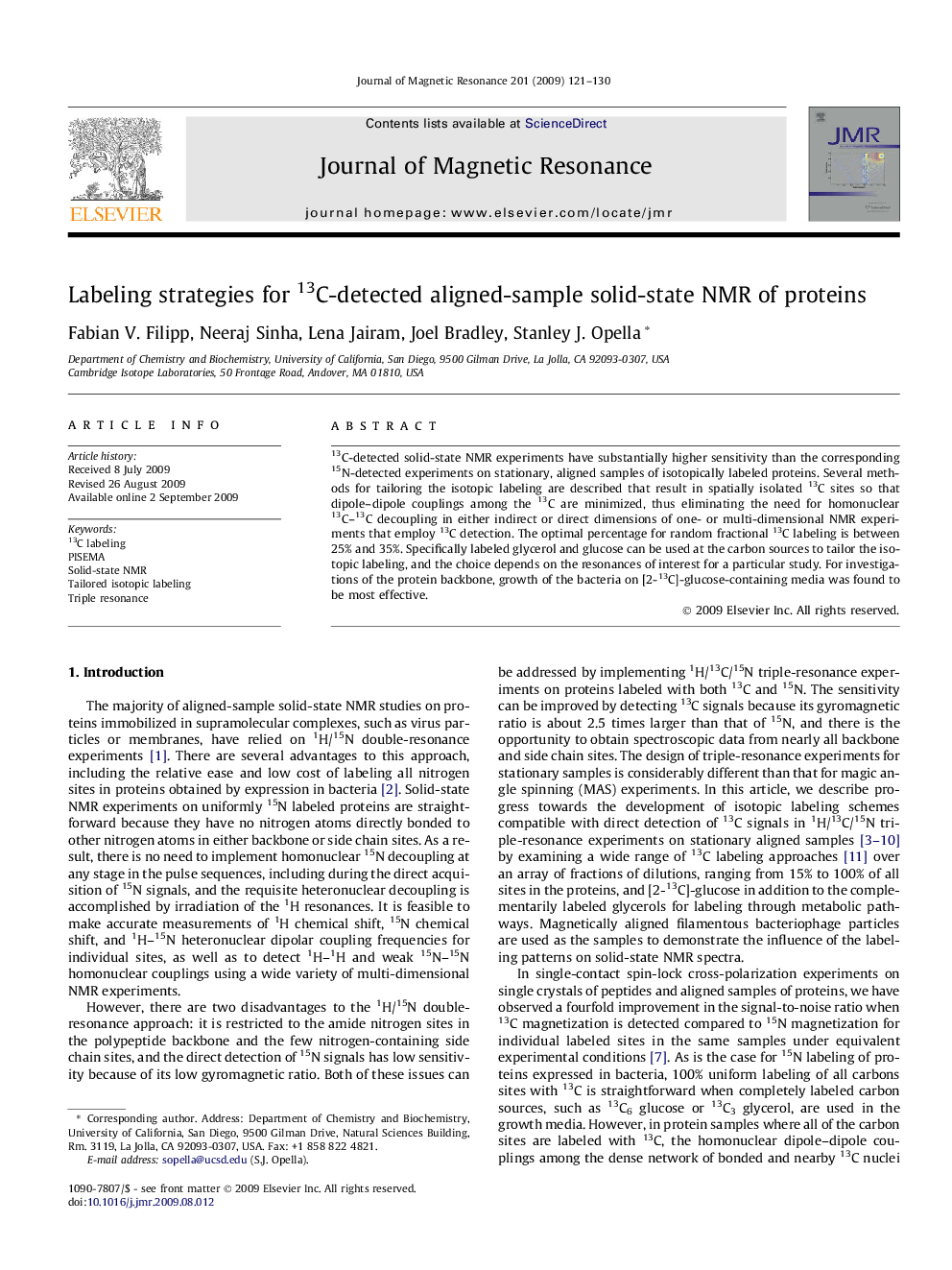| Article ID | Journal | Published Year | Pages | File Type |
|---|---|---|---|---|
| 5406474 | Journal of Magnetic Resonance | 2009 | 10 Pages |
Abstract
13C-detected solid-state NMR experiments have substantially higher sensitivity than the corresponding 15N-detected experiments on stationary, aligned samples of isotopically labeled proteins. Several methods for tailoring the isotopic labeling are described that result in spatially isolated 13C sites so that dipole-dipole couplings among the 13C are minimized, thus eliminating the need for homonuclear 13C-13C decoupling in either indirect or direct dimensions of one- or multi-dimensional NMR experiments that employ 13C detection. The optimal percentage for random fractional 13C labeling is between 25% and 35%. Specifically labeled glycerol and glucose can be used at the carbon sources to tailor the isotopic labeling, and the choice depends on the resonances of interest for a particular study. For investigations of the protein backbone, growth of the bacteria on [2-13C]-glucose-containing media was found to be most effective.
Related Topics
Physical Sciences and Engineering
Chemistry
Physical and Theoretical Chemistry
Authors
Fabian V. Filipp, Neeraj Sinha, Lena Jairam, Joel Bradley, Stanley J. Opella,
